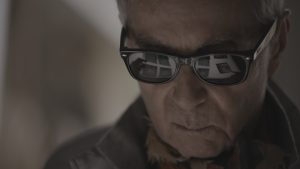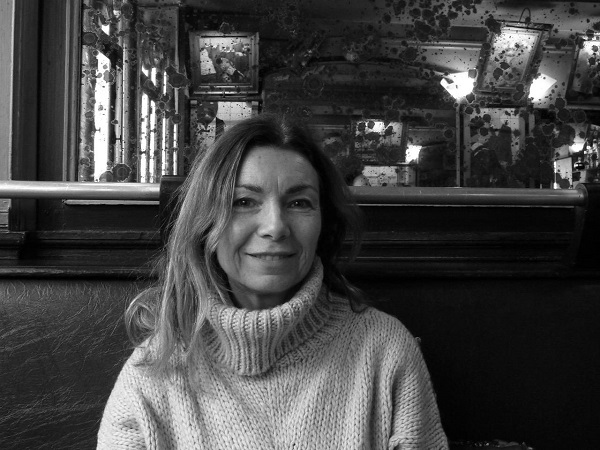Between Audrey Hepburn and Ava Gardner, Elisabeth Taylor and Veruschka, the famous photographer Gian Paolo Barbieri, whose works are hosted at the Victoria & Albert Museum in London and in other international museums, in his career has traveled the path of beauty, taking memorable photos for the fashion world and reportages on distant countries, exotic cultures and nature. A splendid new film, recently presented at the Biografilm Festival in Bologna, tells the story of his life and his dazzling encounters. “Gian Gian Paolo Barbieri. L’uomo e la bellezza”, directed by Emiliano Scatarzi, who wrote the screenplay with Federica Masin, deservedly won the Audience Award Biografilm Art & Music 2022 of the public. It is fascinating to listen to the thoughts and memories of Barbieri, who is still active despite Parkison’s illness. Barbieri works with inexhaustible creativity and a very personal style for special clients and advertising campaigns, he is lucid and critical, always curious about contemporary art and culture. The artist, who has published several books and worked for many couturiers including Valentino, Versace, Ferré, Armani and Yves Saint Laurent, was born in Milan in 1935 from a family of fabric merchants, so from an early age he dealt with the fashion world. He began working in the theater field as a set and costume designer as well as an actor (he was an elegant and beautiful boy) and then moved to Paris as an assistant to Harpeer’s Bazaar photographer Tom Kublin. In 1964 he opened his own studio in Milan starting his long collaboration with Vogue Italia and with the international magazines of the Condé Nast group. His great love for cinema and art has always inspired him to recreate detailed images, citing for example masterpieces of Futurism, or even outside the box, like when in Port Sudan he had a camel lifted with a crane, a very iconic photographic shot. In the biopic we see him working on the large format Polaroids and in important moments in his sets or studio and during the many trips he took, such as the one to Tahiti in the 90s where he portrayed beautiful naked bodies and tattoos. We interviewed the film director Emiliano Scatarzi, born in 1973, who had already worked on a video with him and with the Gian Paolo Barbieri Foundation.
Manuela Teatini: What would you like to tell us about your meeting with Barbieri?
Emiliano Scatarzi: The meeting with Barbieri changed my life. At that time I was a rather arrogant young advertiser, used to moving on commercial sets in an environment often frequented by “sharks”. When in 2001 I was offered to do a backstage video job with the artist on the GQ calendar with Monica Bellucci, I did not expect to be personally welcomed with such a great simplicity and elegance by him. Shortly after that meeting I left the advertising world and founded the non-profit organization “Photographers Without Borders” for a conscious, albeit difficult, degrowth, creating reportages and photography workshops in critical areas of the world. Now, after three years of working on the film, I realized that this process of change began in 2001 and that Gian Paolo with his generous and sensitive personality, has made me a better person.
How did you work on the biopic project?
It was not easy, the journey lasted three years. Our film is an independent production financed by Moovie with the Gian Paolo Barbieri Foundation and the collaboration of Leica. The main role was played above all by Federica Masin, who is co-author and producer: working for many years in the industry, she has been our experienced figure. Without her we would not have been able to approach such a demanding film in such a professional way and immediately have many international requests.
How was the film conceived and constructed?
It began by reviewing in my archive some of the shots I had made of Gian Paolo during the backstage for the calendar. I thought I should have made a movie about him. So I contacted Emmanuele Randazzo, President and Director of the Foundation, and I discovered that they were thinking of me to propose a documentary. Things start off well when the stars are favorable and they happen naturally, everything moves smoothly. From that moment on, Federica Masin and I started shooting with Gian Paolo’s Leica camera that shoots in 4K. This was my artistic choice, as if to establish an esoteric bond with him. We shot almost everything by hand to give freedom to movement and leave something dirty and natural, like in Polaroids. Except the interviews with the “Talking Heads”, done strictly with the easel. Above all Martina Corgnati, a talented art critic who supported the whole film together with the testimonies of Laura Asnaghi, Benedetta Barzini, Marpessa, Monica Bellucci, Dolce & Gabbana, Giuseppe Zanotti, Nicola Erni (important collector of Barbieri’s works), Nikolaus Velissiotis and other. When we finally started our collaboration with Moovie, the film started running with a proper crew. Proceeding in the story, we had to make a very difficult selection of Gian Paolo’s works with a religious focus. I am an agnostic but I believe in the sacredness of some things and for me working on Gian Paolo’s immense archive was dealing with something absolutely sacred. I appealed to my sensitivity, but it was a very painful moment.
The soundtrack is very beautiful and elegant. Who was it written and arranged by?
The original music of the film was composed by Cesare Picco, very good and farsighted. He came with us above all because he shared the passion for Gian Paolo that animated the whole crew and because he believed in the project: now he is our associate producer.
What do you think is the most moving and emotional part of the film?
The most moving part for me is when Gian Paolo says: “I have no regrets, but when I was shooting around the world with my camera at the age of thirty, I didn’t realize I was happy”. This is an absolute axiom that explains something that everyone recognizes and that, in my opinion, is the most exciting moment and also the last input of the film. Moreover, he told me that sentence on the first day of shooting the interview for the film.
What are your photographic and cinematographic references?
My photographic references are certainly Giacomelli, Mulas and Ghirri. In cinema my references are a total classic, starting with Bunuel, Orson Welles, Hitchcock, Fellini, Kubrick, Herzog and, of course, all Italian comedy. And then all those sacred monsters that were sensational in past years, like the great Sicilian director Vittorio De Seta who used dirty language: I like it a lot because I am firmly convinced that beauty lies in imperfection.
For all the images: Gian Paolo Barbieri. L’uomo e la bellezza, ph. credits Emiliano Scatarzi, courtesy Moovie








Manuela Teatini, film maker and journalist, focuses on visual arts, in particular cinema, photography and contemporary art. She has written freelance for years with VOGUE, Uomo VOGUE, ELLE and other cinema, art and new trend magazines. She is the author and director of the docufilms “ART BACKSTAGE. La passione e lo sguardo” (2017),” MASSIMO MININI. Story of a Gallerist “(2019),” GIOVANNI BOLDINI. Il Piacere. Story of the Artist” (2021) awarded at the Terra di Siena International Film Festival 2021.






NO COMMENT